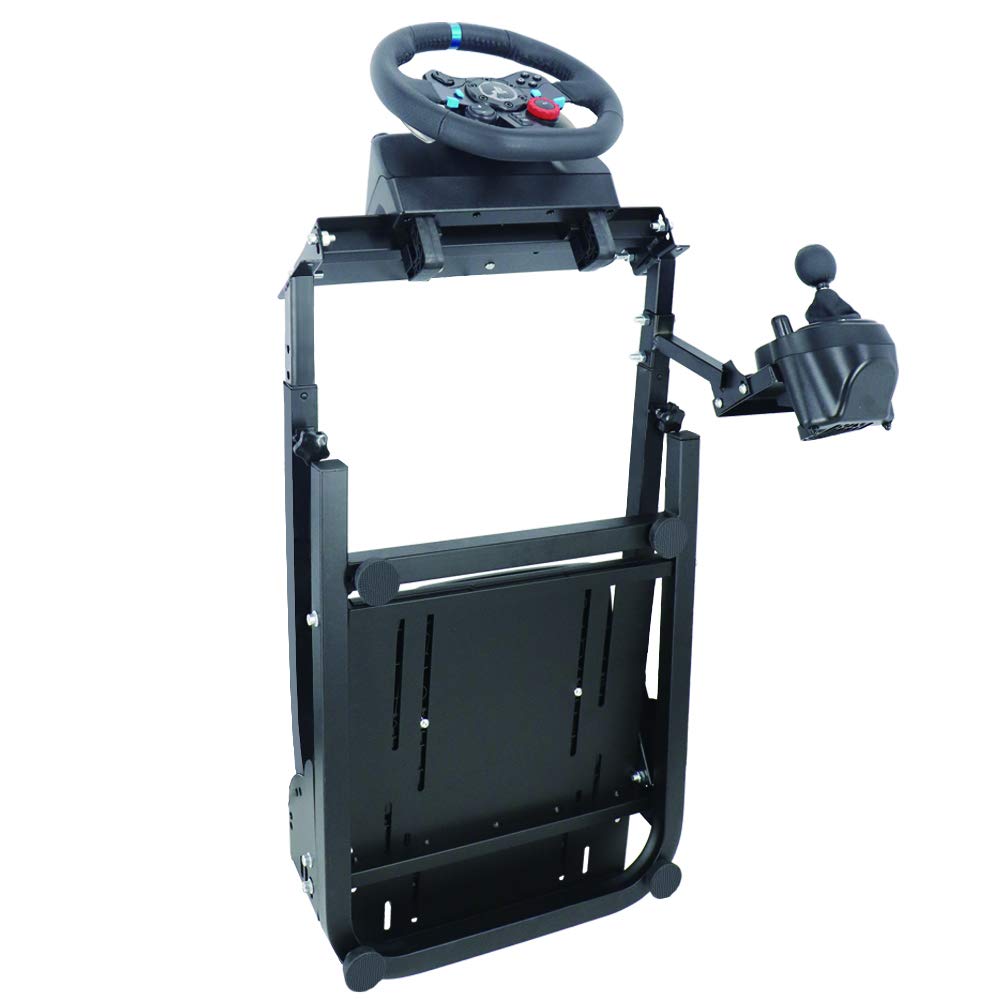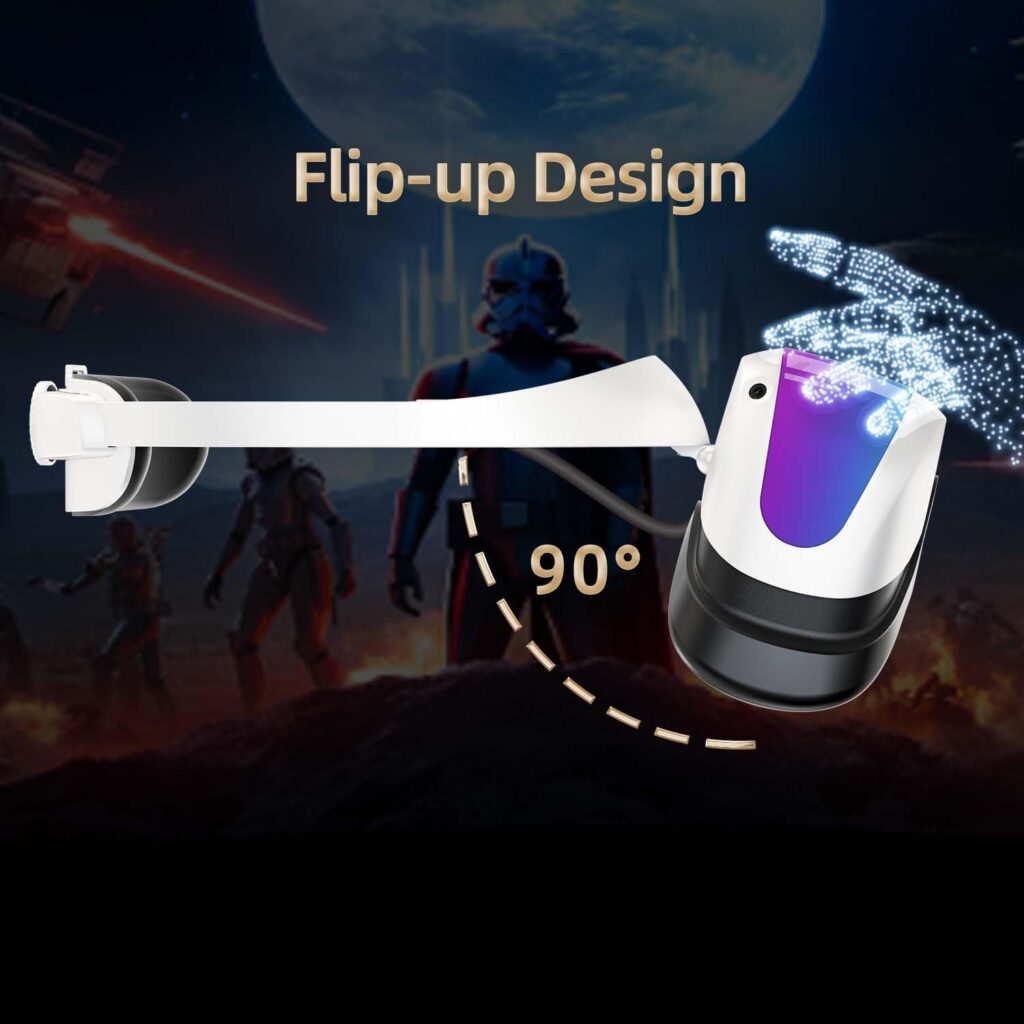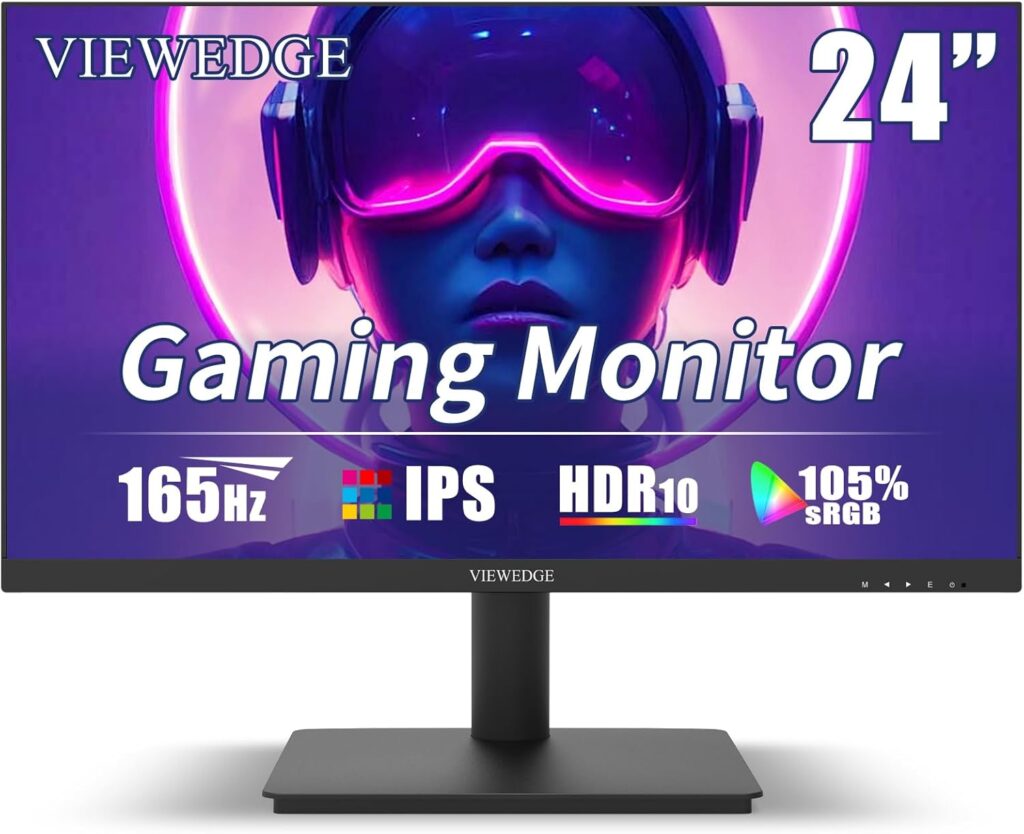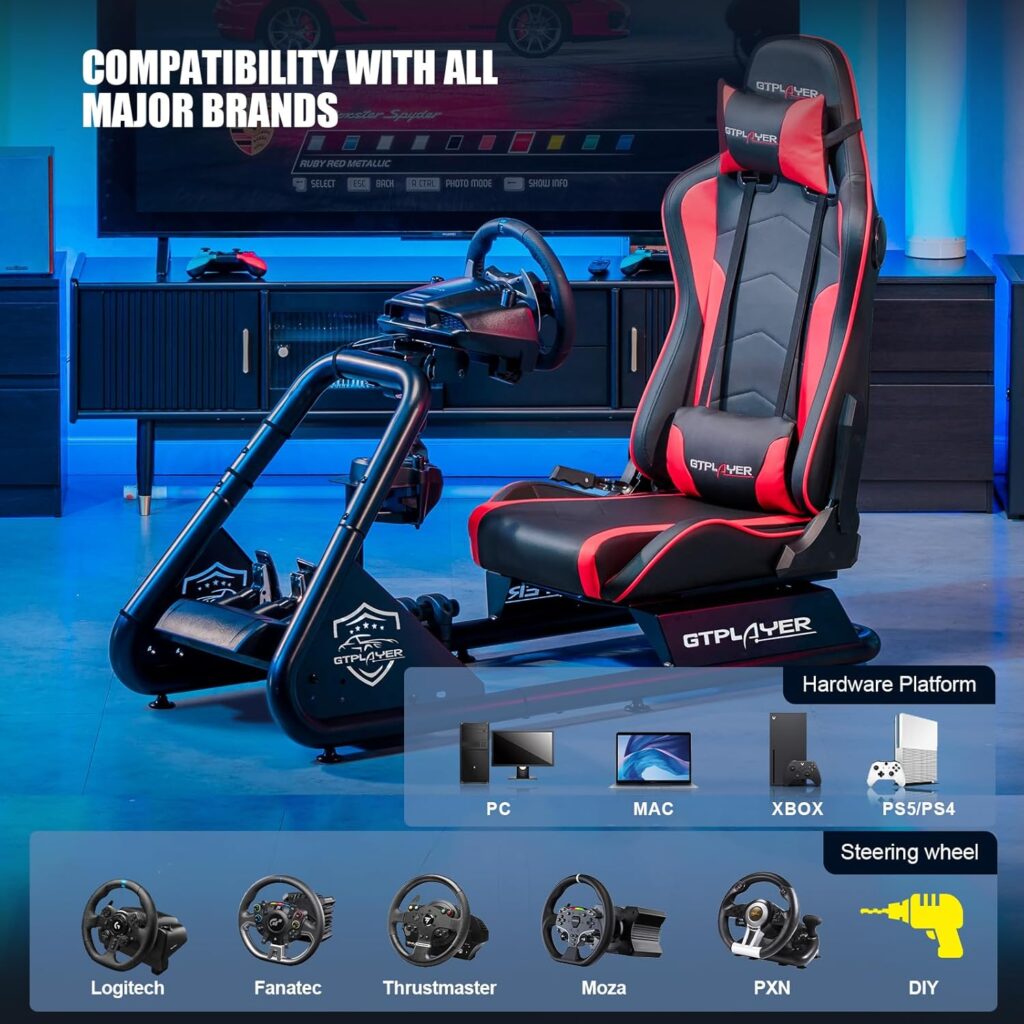In the world of motorsports, there exists a fascinating realm known as sim racing. Sim racing, short for simulated racing, brings the thrill of high-speed competition into the virtual world. But how does it differ from real racing? While both share a common goal of crossing the finish line first, there are key aspects that set them apart. Let’s explore the contrasting elements between the heart-pounding reality of true racing and the adrenaline-fueled simulations that captivate enthusiasts around the globe.
Physicality
Physical exertion in real racing
In real racing, physical exertion is a crucial aspect of the sport. The intense and high-speed nature of real racing requires drivers to be in excellent physical condition. Drivers experience G-forces when accelerating, braking, and taking corners, which puts a significant strain on their bodies. They need to have strong core muscles and a high level of stamina to endure the physically demanding conditions of a real race. The continuous physical exertion throughout a race can leave drivers exhausted and drained by the end.
Limited physical exertion in sim racing
On the other hand, sim racing offers a different physical experience. Since sim racing is done from the comfort of your own home or simulator setup, the physical exertion involved is significantly reduced. Sim racing relies more on mental agility and hand-eye coordination rather than physical strength. While it still requires focus and concentration, sim racers don’t have to physically endure the forces experienced in real racing, making it accessible to a wider range of people who may not have the same physical capabilities.
Environment
Real racing on actual tracks
Real racing takes place on actual tracks, which adds a unique and thrilling element to the sport. The experience of driving on a physically constructed track, surrounded by spectators and a vibrant atmosphere, creates an adrenaline rush for the driver. The track conditions, weather, and various elements of the environment all play a part in the overall experience of real racing. The sensory inputs from the surroundings contribute to the excitement and challenge of the race.
Sim racing in virtual environments
On the other hand, sim racing takes place in virtual environments that replicate real tracks or fictional circuits. While simulators aim to recreate the same tracks as accurately as possible, the experience is undoubtedly different from real racing. Sim racers rely on visual and auditory cues rather than physically experiencing the surroundings. However, modern simulation technology has improved significantly, and sim racers can still enjoy a realistic experience that closely mirrors the real racing environment.
Risk and Safety
Real racing with physical risks
Real racing carries inherent physical risks that cannot be ignored. The high speeds, close proximity to other cars, and challenging track conditions increase the potential for accidents and injuries. Drivers face the danger of collisions, mechanical failures, or even being hit by debris. Safety measures have been implemented to minimize risks, such as protective gear, safety barriers, and advanced car safety features. However, the element of danger remains a defining characteristic of real racing.
Sim racing with reduced risks
Sim racing, on the other hand, offers a significantly reduced risk factor compared to real racing. Since everything is simulated, there is no physical danger involved. While accidents can still occur virtually, the consequences are limited to the virtual world. Simulators provide a safe environment for drivers to push their limits without the fear of physical harm. This reduced risk factor means that sim racing can be enjoyed by people of all ages and skill levels without worrying about personal safety.
Cost
Expensive equipment in real racing
Real racing is often associated with high costs, primarily due to the expenses involved in purchasing, maintaining, and operating high-performance race cars. The cost of acquiring race-ready vehicles, spare parts, tools, and the necessary safety gear can be exorbitant. In addition, teams need to cover expenses like entry fees, transport, accommodation, and hiring professional mechanics and technicians. The financial commitment required to participate in real racing can be a significant barrier for many aspiring racers.
Affordable setup for sim racing
In contrast, sim racing offers a much more affordable alternative for racing enthusiasts. While there may still be costs associated with acquiring a simulator setup, they are relatively lower compared to real racing expenses. Sim racers can purchase a racing wheel, pedals, and a simulator rig to create an immersive racing experience at a fraction of the cost of a real race car. Additionally, most sim racing platforms offer a range of virtual race cars, tracks, and racing series that can be accessed without paying additional fees, making it a more accessible option for those on a limited budget.
Access and Participation
Limited access to real racing opportunities
Real racing opportunities are often limited and exclusive due to various factors. The availability of racetracks, race car ownership, and the extensive network required to participate in professional racing can make it challenging for many individuals to access and participate in real racing. The lack of opportunities can be disheartening for racing enthusiasts who have a passion for the sport but lack the means or connections to enter the world of competitive racing.
Wide accessibility of sim racing
Sim racing, on the other hand, offers a wide accessibility that transcends physical limitations. With the advancement of technology, simulators have become readily available to the general public. Sim racers can participate in virtual races from anywhere in the world, competing against drivers from all walks of life. The online nature of sim racing allows for a vast community to come together, share experiences, and engage in friendly competition. This accessibility has significantly broadened the scope of racing participation, providing opportunities for people who may otherwise never have the chance to experience the thrill of racing.
Driving Experience
Physical sensations in real racing
Real racing provides a unique and unparalleled driving experience. The physical sensations of being in a race car, feeling the vibrations, hearing the engine roar, and being subjected to the forces during acceleration, deceleration, and cornering all contribute to the adrenaline rush of real racing. The visceral experience of being behind the wheel, physically maneuvering the car, and dealing with the intricacies of the track offer a level of engagement and immersion that cannot be replicated in any other way.
Sensations simulated in sim racing
While sim racing cannot replicate the exact physical sensations of real racing, modern simulators strive to recreate an immersive experience. Advanced force-feedback wheels provide realistic feedback, allowing sim racers to feel the nuances of the virtual car’s behavior. Audio cues, such as engine sounds and tire screeches, add to the authenticity of the experience. While the physical sensations may not be identical to real racing, sim racing still provides a level of immersion that allows drivers to feel the thrilling aspects of the sport.
Competition and Skill
Competing against real opponents in real racing
One of the most exciting aspects of real racing is the opportunity to compete against real opponents. The unpredictability of human reactions, strategies, and driving styles creates a dynamic and thrilling atmosphere. Real racing requires not only driving skill but also the ability to read and adapt to the actions of other drivers on the track. The competition in real racing is intense, and the level of skill required to outperform opponents is a testament to the sport’s demanding nature.
Competing against real and AI opponents in sim racing
While sim racing may lack the face-to-face competition of real opponents, it compensates by offering a unique blend of real and AI opponents. Simulators allow players to race against computer-controlled opponents programmed to simulate human behavior. This combination provides a diverse field of competitors, each with their unique strengths and weaknesses. Sim racers can test their skills against both real opponents in online races and AI opponents in single-player modes, offering a well-rounded and challenging racing experience.
Learning and Training
Real-life driving experience in real racing
One of the benefits of real racing is the potential for real-life driving experience. Aspiring racers can gain valuable skills by honing their driving abilities in actual race cars. The hands-on experience of controlling a vehicle under real race conditions allows drivers to refine their techniques, develop racing instincts, and improve their decision-making abilities. Real racing provides a platform for continuous learning where drivers can receive feedback from experienced professionals and work on improving their performance.
Virtual practice and training in sim racing
Sim racing offers a convenient and efficient way to practice and train in a controlled environment. Simulators allow racers to repeatedly practice specific tracks, corners, or techniques without the cost and logistical challenges associated with real racing. The ability to instantly reset and start again after making a mistake is invaluable for learning and improving driving skills. Sim racers can also utilize training programs and tutorials to enhance their understanding of racing fundamentals, making sim racing an effective tool for skill development.
Feedback and Analysis
Real-time feedback in real racing
In real racing, feedback plays a crucial role in driver improvement. Real-time feedback from engineers, team members, and even car telemetry allows drivers to make on-the-fly adjustments and optimize their performance. The ability to communicate with the pit crew, receive strategy updates, and adapt to changing track conditions provides a competitive edge and enhances the overall racing experience. Immediate feedback during a race helps drivers make split-second decisions and fine-tune their driving techniques.
Post-race analysis in sim racing
Sim racing offers a unique advantage when it comes to feedback and analysis. After each race, sim racers have the opportunity to review their performance in detail. Simulators provide data logs, lap times, and telemetry information that can be analyzed and compared. Sim racers can study their lines, braking points, and throttle inputs to identify areas for improvement. This post-race analysis allows for a more comprehensive understanding of driving techniques and helps sim racers fine-tune their skills for future races. Moreover, sim racing communities often provide forums, coaching, and third-party software tools to help racers analyze their performance and facilitate feedback.
Professional Opportunities
Limited professional opportunities in real racing
While real racing offers the allure of professional racing careers, the reality is that the opportunities are limited and highly competitive. Aspiring racers need substantial financial backing, networking, and undeniable talent to secure a position in professional racing teams. The fierce competition for limited spots in prestigious racing series makes it challenging for many talented drivers to break into the professional racing scene. The pathway to professional success in real racing is often paved with countless obstacles and requires a significant amount of luck and resources.
Growing professional opportunities in sim racing
Sim racing, on the other hand, has seen a significant rise in professional opportunities in recent years. Esports organizations are investing heavily in sim racing competitions, offering cash prizes, sponsorships, and professional contracts to talented sim racers. The increasing popularity of sim racing has opened up avenues for professional careers as sim racers can participate in championship series, join professional teams, and even race against real-life professional drivers in high-profile events. Sim racing unquestionably provides a more accessible and inclusive avenue for individuals to pursue a professional racing career.
In conclusion, while sim racing and real racing share a common passion for speed, competition, and adrenaline, they offer distinct experiences and opportunities. Real racing provides a physical and immersive experience, with the thrill of pushing the limits in high-speed machines. Sim racing, on the other hand, offers accessibility, affordability, and the opportunity to compete in a virtual world that closely replicates the excitement of real racing. Whether you prefer the physical demands and risks of real racing or the convenience and inclusivity of sim racing, both forms of racing have their unique appeal and continue to captivate racing enthusiasts worldwide.




